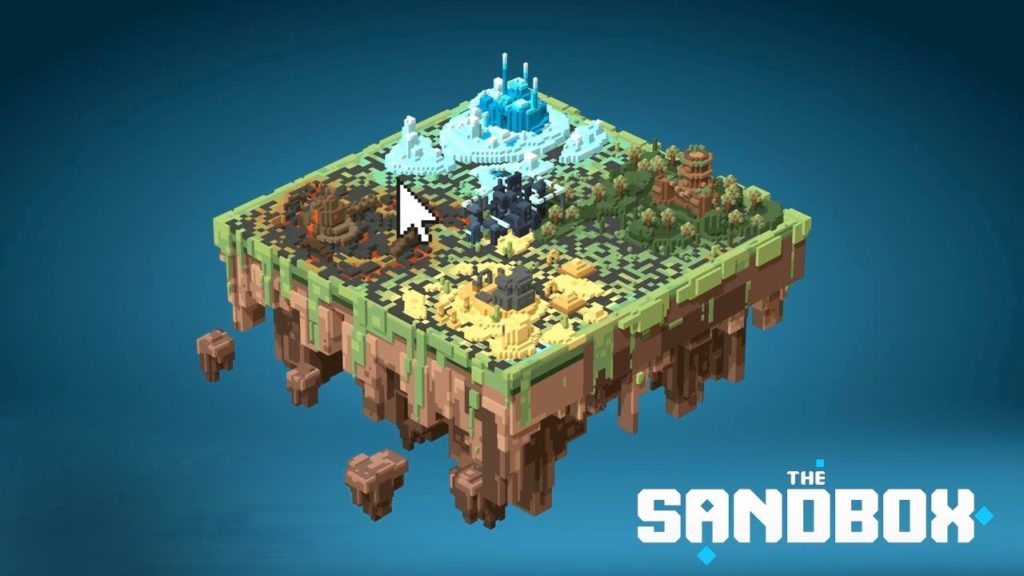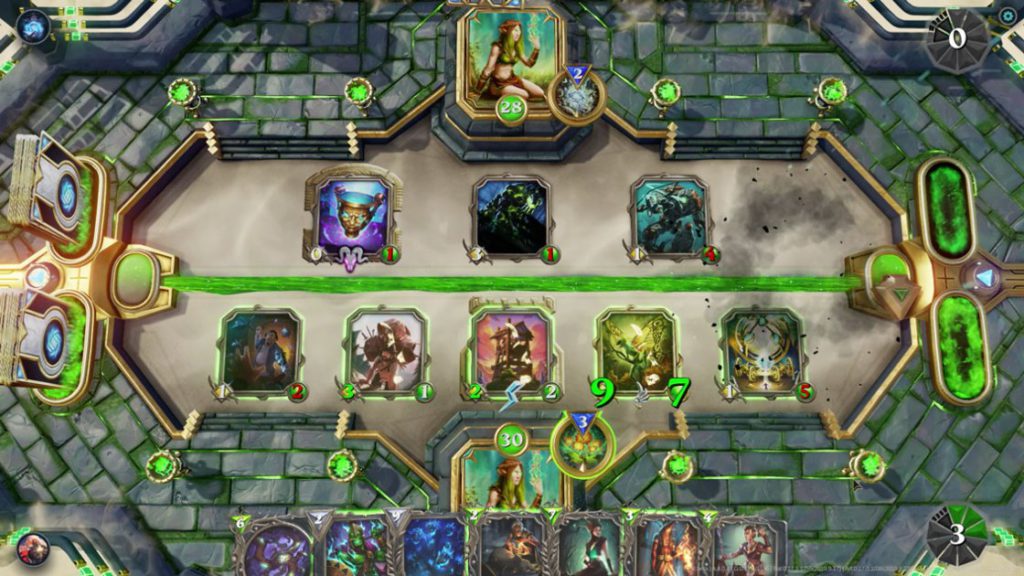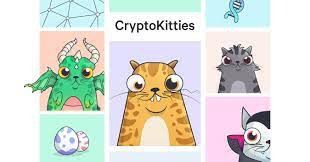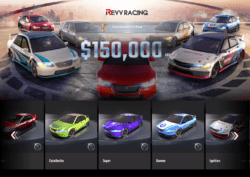Top 10 Gaming Assets Pave The Way For NFT Adoption

NFT adoption, or non-fungible tokens, are digital assets that represent ownership or proof of authenticity of a unique item or piece of content, such as artwork, music, videos, virtual real estate, collectibles, or even tweets. Unlike cryptocurrencies like Bitcoin or Ethereum, which are fungible and can be exchanged on a one-to-one basis, NFTs are indivisible and cannot be exchanged on a like-for-like basis.
The uniqueness and scarcity of NFTs are made possible through blockchain technology, which provides a decentralized and transparent ledger to record the ownership and transaction history of each token. Most NFTs are built on the Ethereum blockchain using the ERC-721 or ERC-1155 standards, although other blockchains such as Binance Smart Chain and Flow are also used for NFT creation and trading.
One of the key features of NFTs is the ability to verify and establish ownership, as each token contains metadata that defines its specific characteristics, provenance, and history. This metadata is stored on the blockchain and can include information like the creator’s name, a description of the item, and a link to the associated media or content. The blockchain ensures that this information cannot be altered, providing a reliable and immutable record of the NFT’s authenticity and ownership.
NFTs have gained significant popularity and attention in recent years, largely due to the explosion of digital art and the ability to tokenize and sell unique pieces online. Artists and creators can mint their artwork as NFTs, effectively creating a digital certificate of ownership that can be bought, sold, and traded on various NFT marketplaces. This has opened up new possibilities for artists to monetize their work and reach a global audience directly, bypassing traditional intermediaries.
NFTs have also been used in the world of gaming and virtual reality, where they enable the ownership and trading of in-game assets, virtual land, and virtual items. This allows players to truly own and control their digital assets, potentially creating new economies within virtual worlds.
However, NFTs have not been without controversy and criticism. Some concerns revolve around environmental impact, as the energy consumption associated with certain blockchain networks, like Ethereum, has raised questions about the sustainability of NFTs. Additionally, there have been instances of plagiarism and copyright infringement, where individuals have minted NFTs of others’ work without permission or proper attribution.
Despite the challenges and criticisms, NFTs have undeniably created new possibilities for digital ownership and have disrupted traditional notions of art, collectibles, and ownership. The market for NFTs has seen both remarkable success stories and speculative bubbles, with high-profile sales and auctions capturing headlines. As the technology continues to evolve and mature, it will be interesting to see how NFTs shape the future of digital assets, intellectual property, and the creative economy as a whole.
The conversion of #crypto and gaming has been interesting to watch in the past few years.
Not all gamers are on board but you can see the value-add of easily tradable digital assets and the use of digital currencies, like #bitcoin, in the gaming ecosystem. #P2E #P2EGames pic.twitter.com/AIWEcgLC08
— Patrick Lowry (@Patrick_Lowry_) June 20, 2023
Importance of NFTs for gaming assets
NFTs have emerged as a game-changer in the world of gaming assets, bringing a new level of ownership, scarcity, and value to digital items within video games and virtual worlds. Here are some key reasons why NFTs are important for gaming assets:
1. True Ownership: Traditionally, players invest time and money into acquiring in-game items, such as weapons, skins, or virtual real estate, but they do not have true ownership of these assets. With NFTs, players can actually own these items, as the tokens represent unique and verifiable ownership rights. This allows players to buy, sell, and trade their assets freely, both within and outside the game’s ecosystem.
2. Interoperability and Cross-Game Compatibility: NFTs are not limited to a specific game or platform. They can be designed to be interoperable, meaning they can be used across multiple games or virtual worlds. This enables players to carry their assets and achievements from one game to another, creating a seamless and connected gaming experience. It also opens up opportunities for collaboration and asset sharing between different games and developers.
3. Player-driven Economies: NFTs empower players to participate in and shape the economies within virtual worlds. By allowing the buying, selling, and trading of in-game assets, NFTs enable the emergence of player-driven markets and economies. Players can determine the value of items based on supply and demand, and some have even made significant profits by trading rare or sought-after assets.
4. Scarcity and Rarity: NFTs introduce the concept of scarcity and rarity to digital assets in gaming. Unlike traditional digital items that can be replicated infinitely, NFTs are unique and indivisible, which gives them inherent scarcity. This scarcity can drive up the value and desirability of certain assets, making them highly sought after by collectors and enthusiasts.
5. Creator Revenue and Monetization: NFTs provide a new revenue stream for game developers and creators. By tokenizing and selling in-game assets as NFTs, developers can directly monetize their creations and provide additional value to players. This can incentivize developers to continue supporting and expanding their games, as they can generate ongoing revenue from the sale of NFTs.
6. Community Engagement and Participation: NFTs can foster a stronger sense of community and engagement among players. Players can collaborate, trade, and even collectively own unique assets through mechanisms like fractional ownership of NFTs. This creates opportunities for social interactions, fan-driven initiatives, and collaborative gameplay experiences, further enhancing the overall gaming experience.
7. Provably Authentic and Transparent: NFTs leverage blockchain technology to provide transparent ownership records and provenance. Players can verify the authenticity and origin of an asset, ensuring that they are not counterfeit or illegally obtained. This trust and transparency can enhance the confidence of players in the value and legitimacy of their virtual possessions.
In summary, NFTs bring significant importance to gaming assets by enabling true ownership, interoperability, player-driven economies, scarcity, creator monetization, community engagement, and transparent authenticity. As the technology and adoption of NFTs in gaming continue to evolve, they have the potential to revolutionize the way players interact with virtual worlds and the value they derive from their gaming experiences.
Also read: Top 10 Blockchain Gaming Companies That Got Series Funding In 2023
Top 10 gaming assets pave the way for NFT adoption
Non-fungible tokens (NFTs) have been gaining popularity in recent years, and the gaming industry is no exception. NFTs can be used to represent a variety of in-game assets, such as characters, weapons, and skins. This has led to the creation of a new breed of games that are built entirely on NFTs.
Here are the top 10 gaming assets that are paving the way for NFT adoption:
Axie Infinity: Axie Infinity is a blockchain-based game that allows players to collect, breed, and battle digital pets called Axies. Axies are NFTs, which means that they are unique and cannot be replaced. Players can earn cryptocurrency by winning battles and completing quests.

The Sandbox: The Sandbox is a virtual world where players can buy, sell, and build using NFTs. The game allows players to create their own games, experiences, and assets.

Decentraland: Decentraland is another virtual world that is built on NFTs. Players can own land, build structures, and create games.
Gods Unchained: Gods Unchained is a collectible card game that uses NFTs to represent cards. Players can earn cards by winning matches or by purchasing them from other players.

CryptoKitties: CryptoKitties is a game where players can collect, breed, and trade digital cats. CryptoKitties were some of the first NFTs to gain mainstream attention.

Sorare: Sorare is a fantasy football game that uses NFTs to represent players. Players can earn points based on the performance of their players in real-world matches.
NBA Top Shot: NBA Top Shot is a collectible card game that uses NFTs to represent NBA highlights. Players can buy and sell highlights, and they can also earn rewards for watching highlights.
Sandbox Evolution: Sandbox Evolution is a game where players can build and customize their own worlds using NFTs. Players can also earn cryptocurrency by selling their creations.
REVV Racing: REVV Racing is a blockchain-based racing game that allows players to collect, upgrade, and race cars. Cars are NFTs, which means that they are unique and cannot be replaced.

Alien Worlds: Alien Worlds is a play-to-earn game that allows players to mine cryptocurrency by exploring planets and completing quests. Players can also earn cryptocurrency by staking their NFTs.
These are just a few of the many gaming assets that are paving the way for NFT adoption. As the NFT market continues to grow, we can expect to see even more innovative and exciting gaming applications for NFTs.
Benefits of using NFTs in gaming
There are many benefits to using NFTs in gaming, including:
- Ownership: NFTs give players true ownership of their in-game assets. This means that players can sell, trade, or lend their assets to other players.
- Scarcity: NFTs are scarce, which means that they have value. This can lead to increased demand for NFTs, which can drive up prices.
- Transparency: NFTs are stored on the blockchain, which is a transparent and secure ledger. This means that players can always verify the ownership of their assets.
- Equity: NFTs can help to create a more equitable gaming environment. For example, players who own NFTs can earn rewards for participating in the game, regardless of their skill level.
Also read: Top 5 Blockchain Gaming Platforms Transforming The Industry
Risk associated with NFTs
While NFTs have gained significant popularity and generated substantial interest, they also come with a set of risks and challenges. It is important to understand and consider these risks before engaging in the NFT space. Here are some notable risks associated with NFTs:
1. Market Volatility: The NFT market can be highly volatile, with prices of certain assets experiencing significant fluctuations. The value of an NFT can be influenced by factors such as hype, trends, celebrity endorsements, or market speculation. This volatility can lead to price bubbles and potential financial losses for buyers or investors who enter the market without careful consideration.
2. Lack of Regulation and Oversight: The NFT space is still relatively new and largely unregulated. This lack of oversight can attract fraudulent activities, scams, and unethical practices. It’s crucial to exercise caution when participating in NFT transactions and to thoroughly research the platforms, creators, and marketplaces involved.
3. Counterfeit and Plagiarism Concerns: Despite the blockchain’s ability to verify authenticity, there have been instances where NFTs have been created for plagiarized or stolen content. In some cases, creators may misrepresent their ownership or authorization to mint and sell certain assets. Due diligence is necessary to ensure the legitimacy and originality of the NFTs being purchased.
4. Environmental Impact: The most popular NFTs are typically built on blockchain networks like Ethereum, which consume a substantial amount of energy. Critics argue that the energy consumption associated with NFTs and blockchain technology is unsustainable and contributes to carbon emissions. The environmental impact of NFTs has raised concerns about their long-term viability and sustainability.
5. Limited Liquidity: While NFTs provide ownership rights, selling an NFT and converting it back into traditional currency can be challenging. The liquidity of the NFT market can be limited, and finding a buyer at the desired price may not always be straightforward. Illiquid markets can make it difficult for individuals to exit their investments or realize the value of their NFT holdings.
6. Intellectual Property Disputes: NFTs can potentially infringe upon intellectual property rights. There have been cases where artists’ work has been minted and sold as NFTs without their consent, leading to copyright disputes. The decentralized nature of blockchain can complicate the resolution of such disputes, making it important to understand the legal implications and rights involved in NFT creation and sale.
7. Technology Risks: NFTs rely on blockchain technology, which is not immune to technical vulnerabilities and risks. Blockchain networks can experience hacks, smart contract bugs, or other vulnerabilities that could result in the loss or theft of NFTs. Additionally, if a particular blockchain used for NFTs becomes obsolete or faces scalability issues, it could impact the functionality and value of the associated tokens.
It’s essential to approach NFT investments and transactions with careful consideration, research, and risk management. Due diligence should be exercised in assessing the authenticity, value, and legal implications of NFTs, as well as understanding the broader market dynamics and associated risks.
Future of gaming assets and NFT Adoption
The future of gaming assets and the adoption of NFTs hold tremendous potential for transforming the gaming industry. Here are some key aspects that highlight the potential trajectory:
1. Increased Ownership and Value: NFTs have already demonstrated the ability to provide players with true ownership of in-game assets. This trend is likely to continue and expand, giving players more control over their virtual possessions. With NFTs, players can accumulate assets, build collections, and invest in rare and valuable items, which could increase the perceived and actual value of gaming assets.
2. Interoperability and Cross-Platform Integration: NFTs offer the possibility of seamless interoperability between different games and virtual worlds. This means that players can carry their assets across various platforms, creating a unified and continuous gaming experience. Cross-platform integration can also facilitate collaborative gameplay and asset sharing, leading to richer and more diverse gaming experiences.
3. Player-Driven Economies and Revenue Sharing: NFTs enable player-driven economies, where players have more influence over the value and trade of in-game assets. This can create opportunities for players to generate income, not just through gameplay, but also through trading, creating content, and contributing to the gaming ecosystem. Developers may also introduce revenue-sharing models, allowing players to earn a portion of the profits generated from the sales of NFTs.
4. Expansion of Virtual Worlds and Metaverses: NFTs can play a significant role in the growth of virtual worlds and metaverses. As virtual worlds become more immersive, expansive, and interconnected, NFTs can serve as the foundation for unique and tradable virtual assets, including virtual real estate, avatars, wearables, and more. NFTs can enhance the sense of ownership, personalization, and social interaction within these virtual spaces.
5. Collaborative Development and Crowdfunding: NFTs can enable collaborative development and funding models for game development. With NFTs, developers can tokenize game assets, intellectual property rights, or even development milestones, allowing for crowdfunding and shared ownership structures. This can foster a closer relationship between developers and the gaming community, empowering players to have a say in the development process and potentially share in the success of the game.
6. Integration of Real-World Assets: The future of gaming assets and NFT adoption could extend beyond purely digital items. NFTs have the potential to bridge the gap between the virtual and real world by integrating real-world assets and experiences into gaming. This could include tokenizing physical collectibles, real estate, or even offering unique experiences that can be owned and traded digitally.
7. Enhanced Monetization for Creators: NFTs provide new avenues for creators, including artists, musicians, and content creators, to monetize their work within the gaming ecosystem. Artists can sell limited editions of digital artwork, musicians can create exclusive albums or tracks as NFTs, and content creators can tokenize their creations. This allows creators to connect directly with their audience, bypass traditional intermediaries, and potentially earn a more equitable share of the value generated.
While the future of gaming assets and NFT adoption appears promising, there are challenges and considerations that need to be addressed. These include regulatory frameworks, sustainability concerns, scalability of blockchain networks, and ensuring the protection of intellectual property rights. However, as technology evolves, industry players innovate, and user demand continues to grow, the integration of NFTs into gaming assets is poised to reshape the gaming industry and redefine the concept of ownership within virtual worlds.



























































